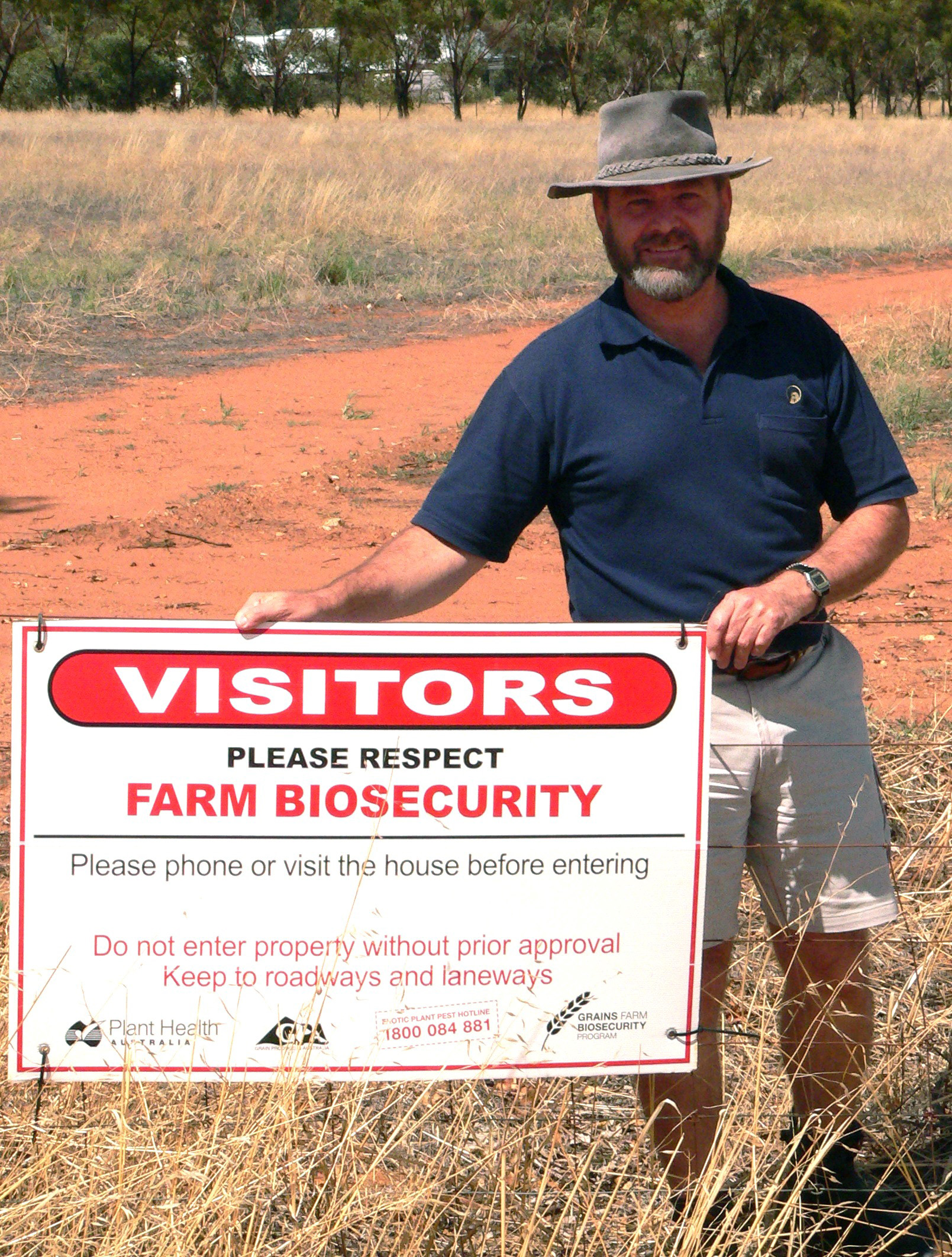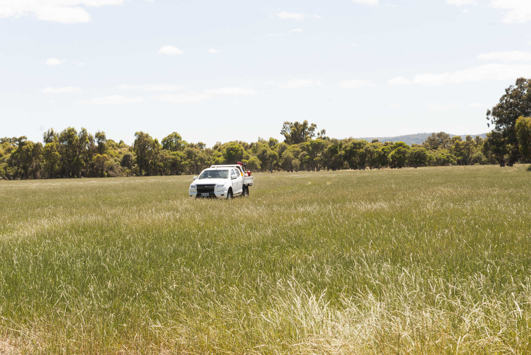
Managing access to and around the property
Anyone or anything entering a farm or property, including vehicles, machinery, people, animals, soil, water, seed, stockfeed or planting material could carry potentially damaging weeds, pests or diseases. Property owners or managers are advised to consider the following:
- Limit the number of entry points to the property.
- Install signage to inform visitors of the biosecurity requirements for entering the property and who to contact.
- Use designated roadways when travelling around the property and limit traffic in productive areas to essential vehicles only.
- Designate specific vehicles and equipment for use only in high-risk areas
- Keep a visitor register to record details of traveller history, including recent visits to livestock or cropping areas on other agricultural properties, or overseas travel.
Monitor and report
Regular monitoring of crops and livestock is critical to detecting new pests and diseases early, before they spread. It is important to be aware of what key pest or disease threats look like. Certain animal diseases must be reported if they are known or suspected to be present in WA.
Reportable animal diseasesMore information
Livestock owners are required to ensure their stock are registered and all stock movements are in accordance with the Biosecurity and Agriculture Management Act 2007 (BAM Act).
Western Australia experiences a wide range of emergency threats including fire, cyclones, floods and heatwaves, many of which may endanger the welfare of livestock, horses, companion animals and wildlife. The best protection is to have a plan to ensure protection and safety not only for your animals but also yourself.
Stockfeed or water supplies can pose a significant risk for transmitting diseases, pests and weeds. Source feed from reputable suppliers and ensure it is stored appropriately. It is important to monitor the water quality for livestock, both to maintain animal health and to reduce the risk of pests and diseases spreading.
In Australia it is illegal to feed restricted animal material to ruminants (cattle, sheep, goats, deer, camels and alpacas). The ruminant feed ban is in place to reduce the risk of the cattle disease bovine spongiform encephalopathy (BSE, also known as ‘mad cow disease’), occurring in Australia.
It is illegal to feed meat, meat products and food that has been in contact with meat to pigs in Australia. These rules apply to every pig, including pet pigs and pigs kept for home consumption.
Visit the comprehensive Livestock farming and Animal biosecurity pages for more information.
A clean and healthy crop begins with appropriately sourced seed. Imported seed must comply with state import conditions and locally sourced seed should be from properties free from weeds, pests and disease.
Machinery used for seeding, chemical spraying or harvest should be clean. Farmers can manage risks associated with chemical residues by following the label or permit directions, adopting responsible farming spraying practices and keeping accurate records. Good on-farm hygiene is important to maintaining grain quality in silos. Misuse of insecticides and fumigants to control insects can cause the development of resistance in insects of stored grain.
Many non-native or introduced exotic animals have established feral populations in WA and have been declared pests under the Biosecurity and Agriculture Management Act 2007 (BAM Act).
All landowners must control declared pests on their land. Pest animals and plants can present a threat to livestock health and damage crops.
The WA Organism list provides information on the declaration status of organisms by local government area. Landholders in prescribed areas should contact their local Recognised Biosecurity Groups (RBGs) for more information on current pest control priorities in their area. RBGs are community-based independent associations that help landholders in specific areas to manage declared pests on their properties.
Come clean, go clean
Adopting a ‘come clean, go clean’ philosophy for machinery, livestock, materials, equipment and people movements on properties is a powerful step to protect businesses. Vehicles, machinery and equipment coming from another property should be cleaned before they leave the previous property. Cleaning on arrival at a property should be a secondary clean to remove any dirt picked up during transport.
Ideally, properties should have a designated wash-down bay for all vehicles, machinery and equipment. This should be used upon entry and exit of the property and when moving between areas of differing risk. It is good practice to regularly wash on-site vehicles as well. The ‘come clean, go clean’ philosophy extends to people, with footwear and clothing that may be potential carriers of pests or diseases.
A footbath can be used to ensure footwear is clean and free from contaminants. Alternatively, provide footwear that is to be worn on the farm only and not taken off site, or use disposable overshoes. Clothing should be clean and dirt free; on-farm or disposable overalls are an option.
Developing an on-property biosecurity plan
On-property biosecurity has traditionally focused on farm biosecurity, but all property owners are equally responsible for biosecurity. A biosecurity plan needs to be tailored to the specific property, outlining the responsibilities of the property owner and manager, the protocols in place, the records that must be kept and the management of visitors to the property. The Farm Biosecurity Action Planner below helps property owners and managers to assess biosecurity risk to their property and actions they can take to address those risks.
Preparing a farm biosecurity plan (Farm Biosecurity website)Links
- Farm Biosecurity
- Preparing a farm biosecurity plan
- Animal biosecurity
- Animal Health Australia
- Plant Health Australia
- Reportable animal diseases
- Western Australian Organism List
- MyPestGuide Reporter
- Pest and Disease Information Service (PaDIS)
- Diagnostic Laboratory Services
- Recognised Biosecurity Groups

